Marigolds are so easy to grow that they’re often recommended as a good plant for children to learn how to garden.
That easygoing nature makes them a fairly sure thing in the face of all kinds of gardening challenges, including container gardening.
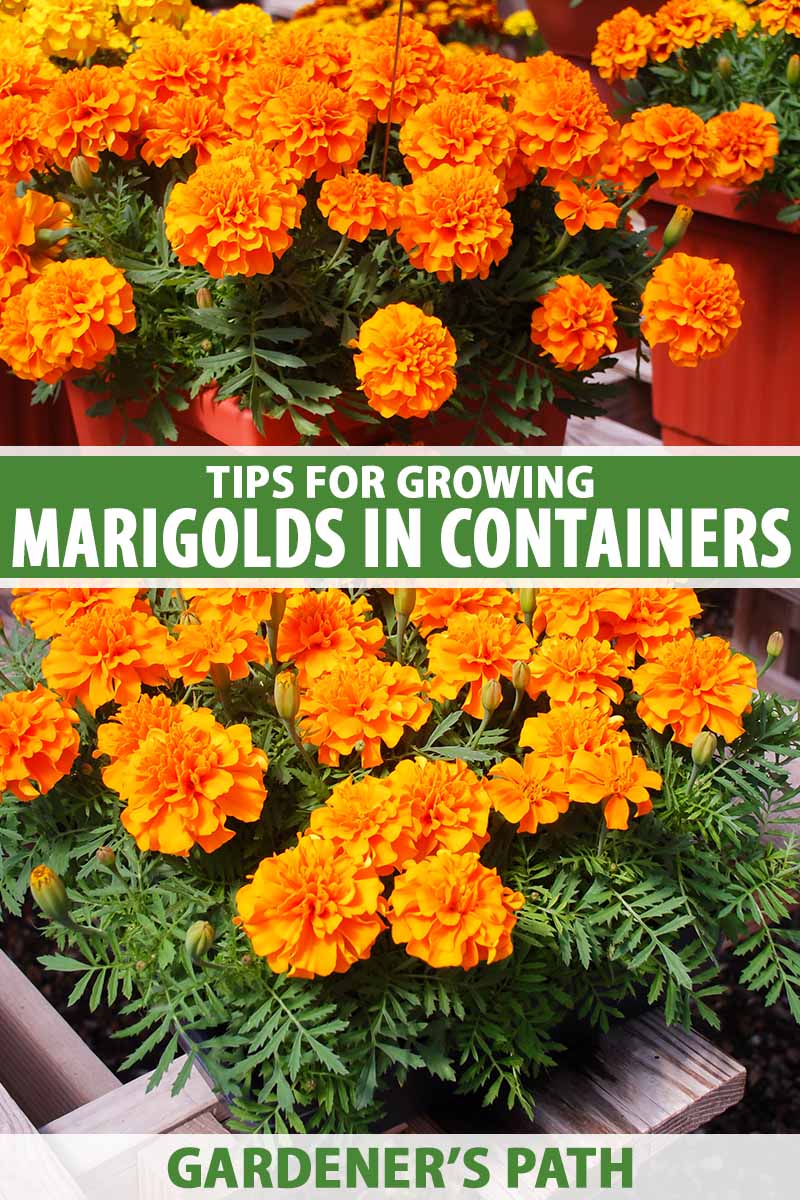
We link to vendors to help you find relevant products. If you buy from one of our links, we may earn a commission.
I know from experience that it can sometimes be hard to keep potted plants alive. They’re prone to drying out quickly, and if you forget to fertilize it can spell disaster. But marigolds make it easy.
They’ll forgive you if you get a bit lazy during the dog days of summer, and they’ll keep on giving you that bright, boisterous display.
We’re going to go over everything you should know to make these plants happy. Here’s what we’ll cover:
Tips for Growing Marigolds in Containers
I don’t know what I’d do without marigolds in containers. My patio would certainly be much blander, that’s for sure.
There are some years when these flowers are the only things livening up my porch and stairs because I simply don’t have the energy for the more high-maintenance stuff.
But don’t assume that just because they’re easy they must be boring. You can find marigolds that can compete with just about any annual flower in terms of beauty.
Our guide to some of the best marigold cultivars out there can help you find the right one for you – and any variety can do well in a container.
Alright, enough chit chat. Let’s jump right in!
The Best Cultivars for Container Growing
Like we said, any Tagetes species or cultivar will do well in a pot or planter so long as it has enough room to grow. Pick your favorite and have at it.
If you want a marigold that is just a little better suited to container life because of its size or growing requirements, pick one of the following:
Moonlight
‘Moonlight’ is an African marigold (T. erecta), but unlike many other cultivars of this species, it’s fairly compact. It grows to about 14 inches tall.
It’s also notably tolerant of drought once established, so if you forget to water yours one weekend, all will not be lost.
You can purchase a small packet, an ounce, or a quarter-pound of seeds from Eden Brothers to bring a little moonlight to your garden.
Naughty Marietta
This French marigold (T. patula) has bright yellow petals with a dark maroon center, all wrapped up in a petite little package.
This pretty cultivar stays under 14 inches tall with a mounding growth habit that makes it perfect for the edges of a container full of taller plants, or as a focal point all on its own.
Cultivars of this species are also typically regarded as more tolerant of wet conditions than other varieties may be.
Eden Brothers carries small packets, one-ounce, and quarter-pound packages of ‘Naughty Marietta.’
Red Knight
Another single-flowered French marigold, ‘Red Knight’ adapts to its environment. In a pot, it stays a bit more compact at around a foot tall.
The dark red flowers and yellow centers stand out against the deep green leaves.
Snap up packages of 500 seeds at Burpee.
Choosing the Right Container
These plants don’t have particularly deep or wide-spreading roots, so they don’t need a massive amount of space to survive. That said, a plant with restricted roots won’t grow as large as it would otherwise.
The required container size depends on the size of the plant you’re growing. A miniature French variety (T. patula) will need a lot less room than a massive Mexican marigold (T. erecta), unless you’re growing a dwarf cultivar.

Of course, you’ll also need a larger pot if you wish to grow several plants together.
In general, a single French specimen or even a pot marigold (Calendula officinalis) will be fine in a six-inch container. Each additional plant should have another six inches of space available.
An African or Mexican marigold typically needs at least a 12-inch pot for enough space to grow a single plant, and an additional 12 inches per plant.
The container material isn’t as important as it can sometimes be with other types of plants. These flowers are pretty happy whether they’re in terra cotta, cement, plastic, wood, or glazed clay.
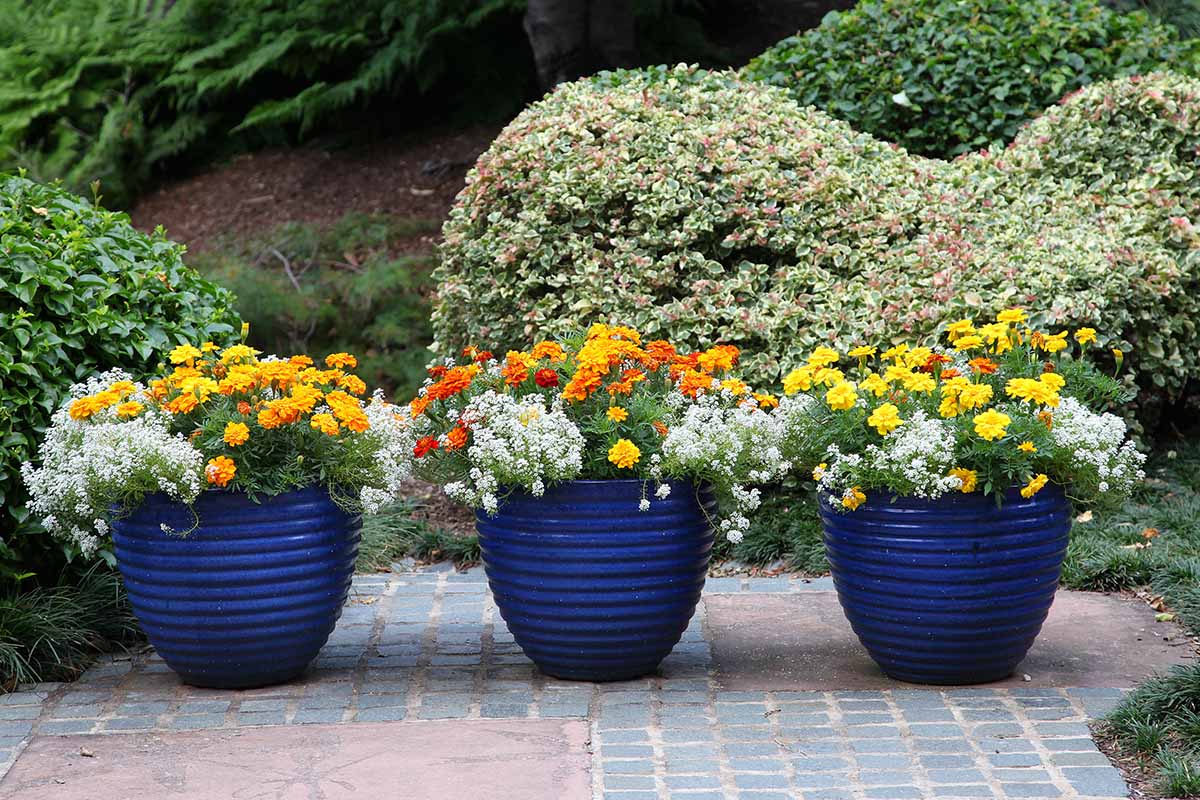
Just keep in mind that terra cotta and wood tend to dry out more quickly, while plastic and cement can crack in cold weather. Learn more about containers and the best materials to choose in our guide.
While Tagetes plants are pretty chill about the type of pot that you put them in, the one thing you can’t skimp on is drainage. Your pot absolutely, positively must have at least one drainage hole.
If the planter is larger than 12 inches across, two or three holes are better.
How to Sow
Regardless of the container you choose, fill it up with a potting-specific mix, such as Fox Farm’s Ocean Forest Potting Soil Mix.
I swear by this stuff for all my potted plants, indoors and out. To pick up a 12-quart bag, pop over to Amazon to find these available singly or in packs of two or four.

Fox Farm Ocean Forest Potting Soil Mix
Then, you have the option of planting seed or purchased starts. The benefit to planting seedlings is that, while they cost more, they mature and begin to bloom more quickly.
For planting marigold seeds, we have a guide that will walk you through when and how to get the job done.
Plan on putting in twice as many seeds in each pot as you’ll ultimately need, and pluck the weaker seedlings when they’re a few inches tall.
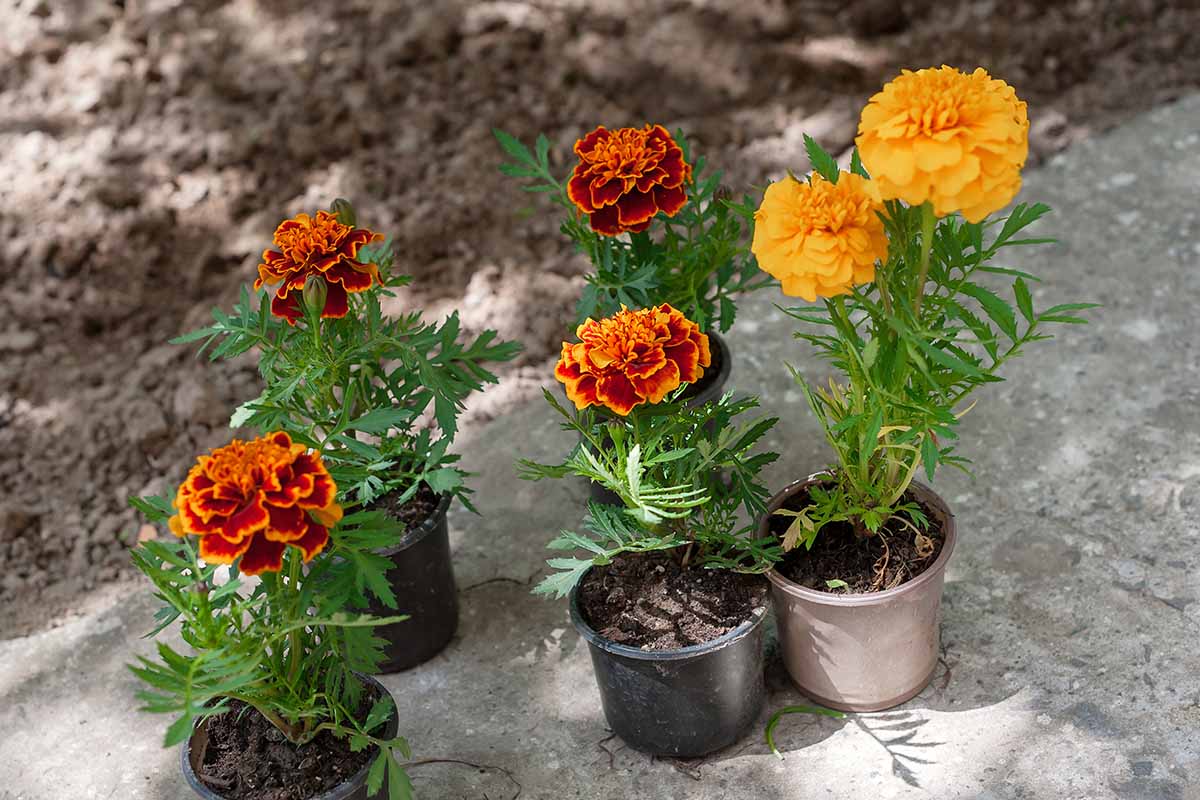
If you’re planting seedlings that you either purchased or started indoors in advance, wait until the last frost date has passed and dig a hole in the soil that’s slightly larger than the size of the seedling cell or nursery pot.
Remove the seedling from its pot, tease apart the roots a bit, and lower it into the hole. Firm around the root ball with fresh potting soil.
Give the plants a good soak so the soil is moist but not wet. Add more soil if necessary so it reaches about a half-inch below the lip of the container.
Place the pot somewhere that it will receive direct sun. If you have a spot next to a brick wall where other plants tend to wilt in the heat, marigolds will be perfectly happy to fill that area for you.
How to Grow
Now, for the easy part: enjoying your flowers. Your biggest job in order to keep them looking their best will be providing moisture.
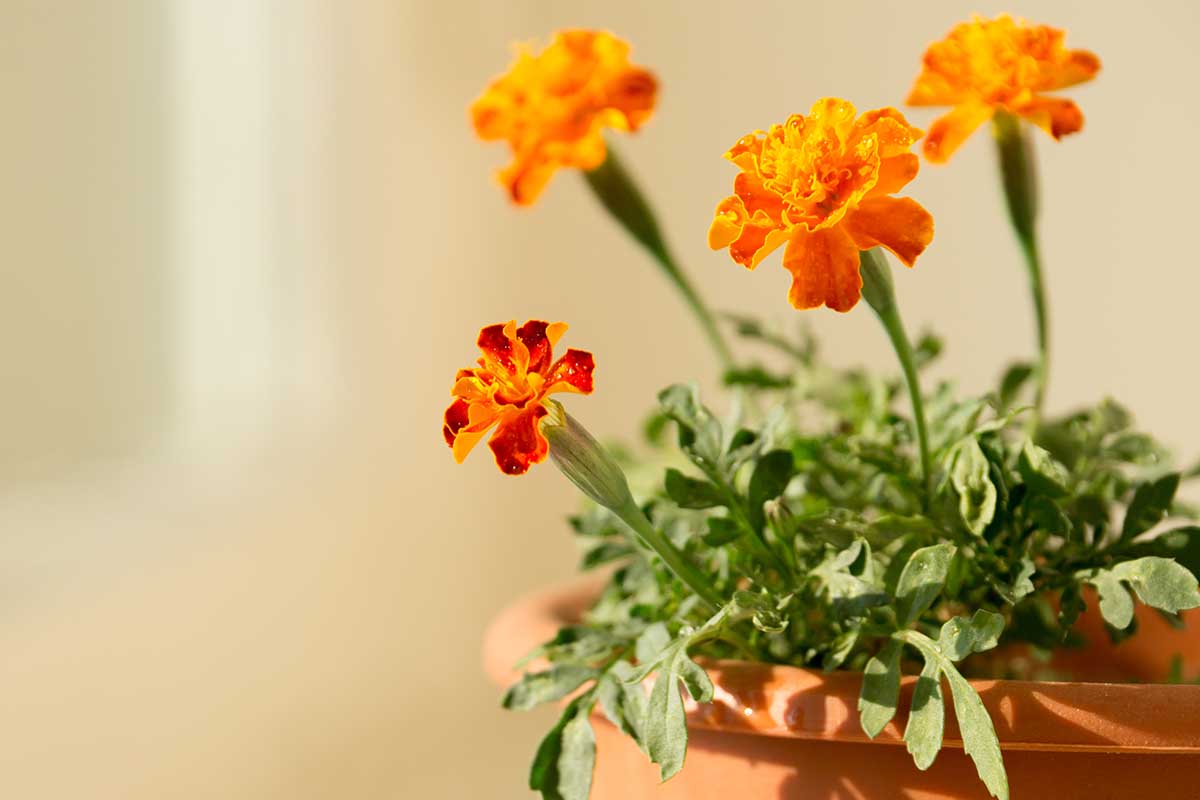
If you live in a supremely dry and hot area, you probably already know that keeping containers moist is a challenge and a half.
Even though marigolds can tolerate drought, I highly recommend using a container watering system, a self-watering pot, or a water bulb.

You can buy decorative water bulbs for a song and they’ll extend the time between necessary watering. Amazon carries 14-inch glass watering bulbs from Evelots in sets of two or four.
For everyone else, be sure to add water once the top inch or two of soil has dried out.
You won’t need to fertilize for the first month or so after planting since there should already be plenty of nutrients in the potting soil that you used. After six weeks, add a balanced fertilizer diluted by half.
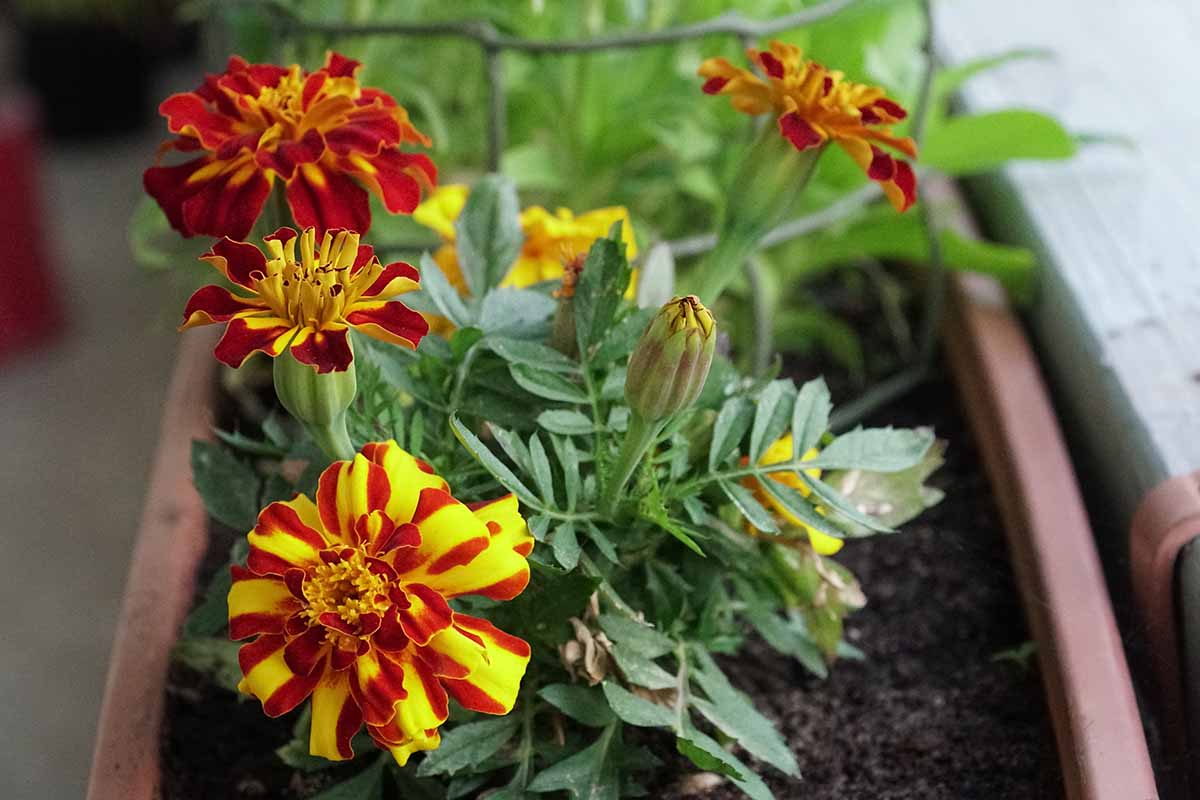
If you really want to make your flowers happy, use a fertilizer formulated for blooming plants.
I like Down to Earth’s Rose & Flower Mix, not only because it’s ideal for growing the biggest blossoms, but because you can use it indoors and out.
Down to Earth Rose & Flower Mix
Arbico Organics has this gardening staple available in one-, five-, and 15-pound packages.
Make These Cheery Flowers a Part of Your Patio Garden
Marigolds make a fantastic companion plant if you’re growing potted tomatoes, but they don’t need a friend to shine. They’re a reliable, beautiful option all on their own.
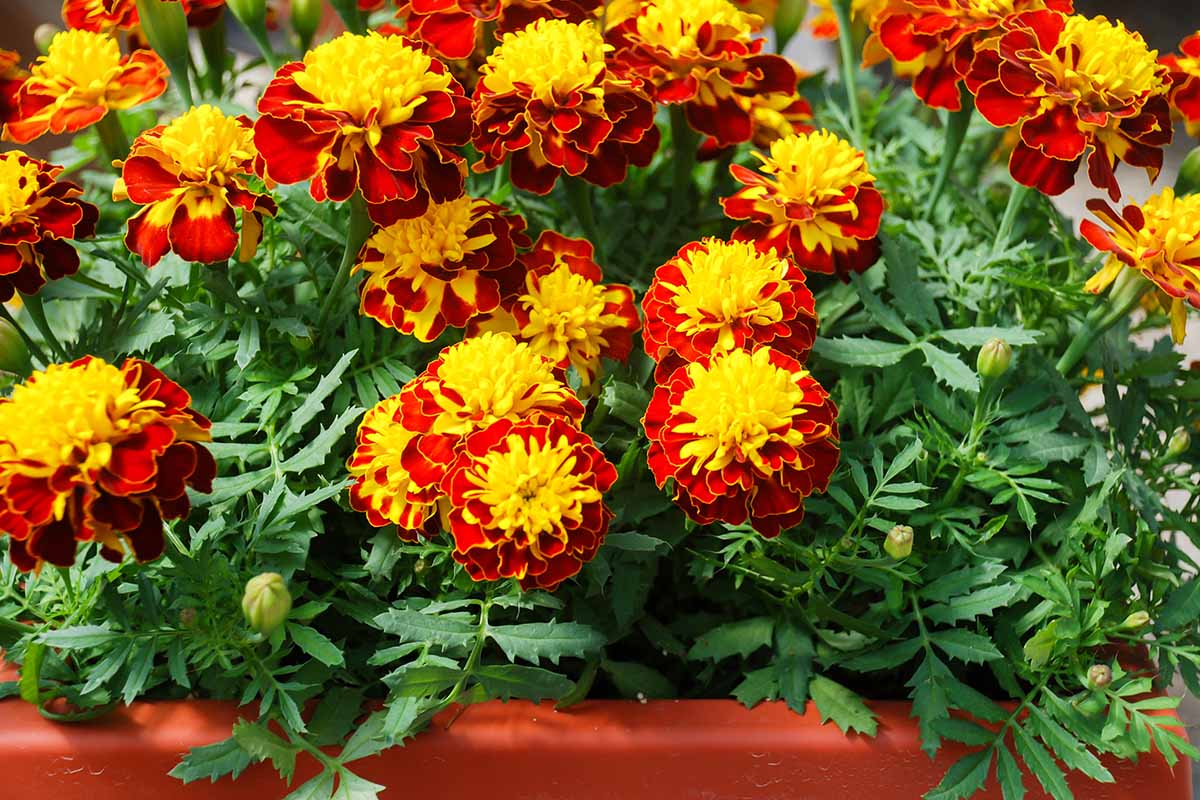
What cultivar are you planning to add to your container garden? Let us know in the comments section below.
Next, if you want to expand your knowledge of growing marigolds even more, you might be interested in the following:
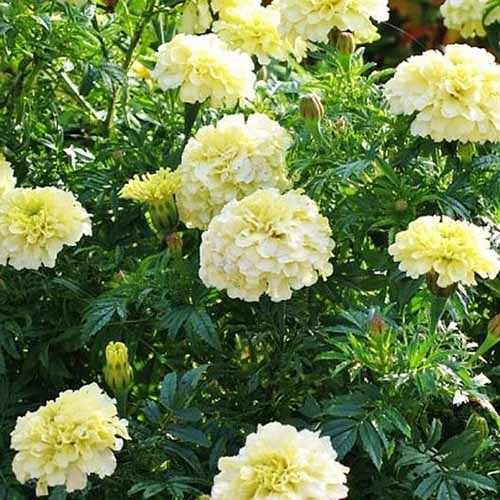
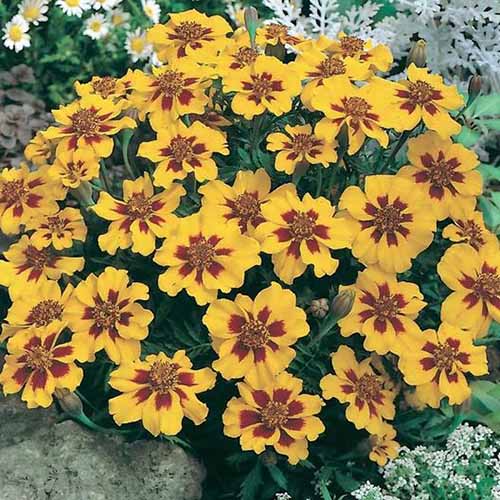
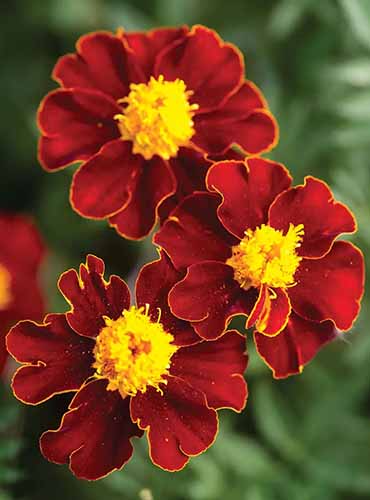
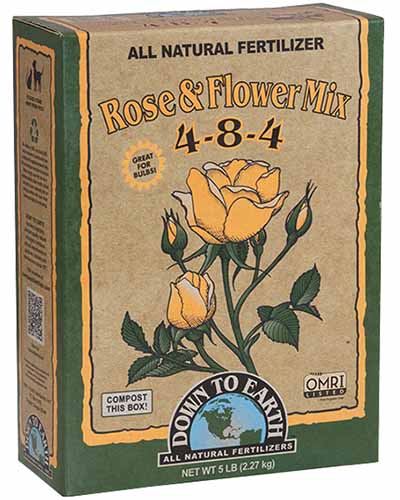
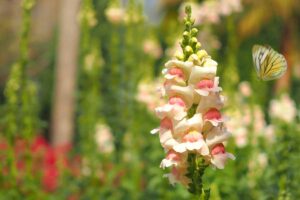


I am excited to try growing marigolds in one of our planters. Thanks for sharing these great tips to do so, especially the reminder to have to water more often!
Best of luck! I’m sure your marigolds will look fantastic.